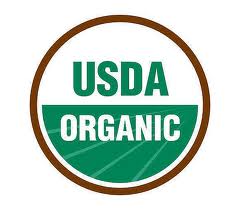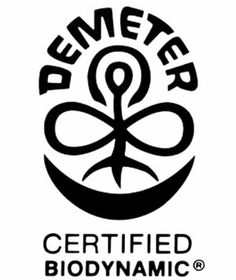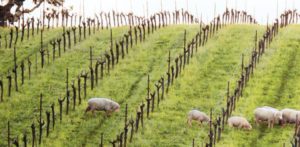Looking for Waterfront Ownership? Consider a Vineyard Instead.


This isn’t really a joke, or humorous, is it?
Let’s look at an easier topic. Vineyards. Inland.
In January 2015 I posted about Certified Biodynamic wines which, for me, are satisfying for the way the vineyards are run; sustainable farming practices, etc.
Just the other day I spotted an LA Times article reprinted in the Baltimore Sun: “Eco-friendly wines are better for the planet and taste better, too.”
An analysis of “…more than 74,000 wines found that those made with certified organic grapes got higher ratings from the experts than those produced using conventional methods.” Bad news, Gallo. Rabbi-blessed wine isn’t enough in this instance either.
 California is the place where 90% of the wine is made in the USA on some 1/2-M acres. Just about 2% are grown according to organic methods.
California is the place where 90% of the wine is made in the USA on some 1/2-M acres. Just about 2% are grown according to organic methods.
Writer Megan Daley says her survey shows that the “Certified Organic” label for wines is a turn-off to shoppers? Really?
Daley reports that an “organic” label suggests higher quality and an associated willingness by customers to pay more for other grocery basket items. A 30% premium for organic apples. A 72% markup on organic milk.
Now hear this. She reports that some 2/3rds of Certified Organic vintners choose not to display the organically grown label on their bottles.
 That is a true surprise as I have higher expectations for a wine that’s organically certified. More confidence about the quality of the wine. For the wines labelled Certified Biodynamic my expectations are even greater as there’s more rigor to achieve that level of naturally produced grapes.
That is a true surprise as I have higher expectations for a wine that’s organically certified. More confidence about the quality of the wine. For the wines labelled Certified Biodynamic my expectations are even greater as there’s more rigor to achieve that level of naturally produced grapes.
Surveying reviews by several lifestyle magazines such as Wine Spectator, researchers found that wine produced per organic-certified methodology “scored 4.1 points higher, on a 100-point scale, on average” than that made by conventional means.
 “There could be a biochemical explanation,” the researchers posited. “Conventional grapes-growing practices use pesticides that can reduce the tiny microbes in soil. Vineyards that follow organic practices might be allowing more of the regional characteristics to get into their bottles.”
“There could be a biochemical explanation,” the researchers posited. “Conventional grapes-growing practices use pesticides that can reduce the tiny microbes in soil. Vineyards that follow organic practices might be allowing more of the regional characteristics to get into their bottles.”
There you have it, folks. Regional characteristics … bottled. Remember Coors and its Rocky Mountain water? For this post topic, it’s more about the “potency” of soil and traditional farming techniques.
But, additional granularity can be brought to what can be told about microbes. Daley writes: “A study published in June [2016] by the American Society for Microbiology suggested that these microbes can contribute to the traits of the region, soil and climate that help give each wine a unique taste.”
I purchase and enjoy both Certified Organic- and Certified Biodynamic-labeled whites and reds. In Annapolis, Katie and Matthew at Bay Ridge Wines & Spirits help me find them in a price range that suits my budget.
French and Italian vintners are by no means left behind. I often find organic or biodynamic labelled wines from those countries are more affordable. One I happen to have on hand and enjoy is Crozes Hermitage by Georges Reynaud. It’s both Certified Organic and Certified Biodynamic. Delicious.
Rather buy U.S.-made ’cause it’s carbon friendlier? Look here for U.S. Certified Biodynamic vintners, or contact Katie to help you put a case together.
Prosit!